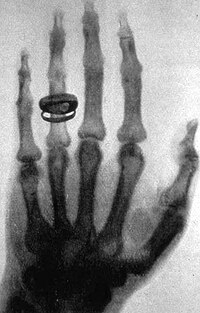
Photo from wikipedia
Common in swine production worldwide, influenza causes significant reductions in feed efficiency and potential transmission to the workforce. Swine vaccines are not universally used in swine production, partly due to… Click to show full abstract
Common in swine production worldwide, influenza causes significant reductions in feed efficiency and potential transmission to the workforce. Swine vaccines are not universally used in swine production, partly due to their limited efficacy because of continuously evolving influenza viruses. We evaluated the effects of vaccination, quarantine of infected pigs, and changes to workforce routine (ensuring workers moved from younger pig batches to older pig batches). A Susceptible-Exposed-Infected-Recovered model was used to simulate stochastic influenza transmission during a single production cycle on an indoor hog growing unit containing 4000 pigs and two workers. The absence of control practices resulted in 3,958 pigs [1 – 3972] being infected and a 0.61 probability of workforce infection. Quarantine of infected pigs the same day they became infectious was the single effective control practice, reducing the number of infected pigs to 3 [1 - 3961] and the probability of workforce infection to 0.27. The second-best control practice was mass pig vaccination (80% effective vaccine), which reduced the number of infected pigs to 23.5 [1 - 635] and the probability of workforce infection to 0.07. The third-best control practice was changing the worker routine by starting with younger to older pig batches, which reduced the number of infected pigs to 997 [1 - 1984] and the probability of workforce infection (0.22). All other control practices, when considered alone, showed little improvement in reducing total infected pigs and the probability of workforce infection. Combining all control strategies reduced the total number of infected pigs to 1 or 2 with a minimal probability of workforce infection (0.03 – 0.01). These findings suggest that non-pharmaceutical interventions can reduce the impact of influenza on swine production and reduce the risk of interspecies transmission when efficacious vaccines are unavailable. Therefore, these results can help prevent the emergence of influenza strains with pandemic potential.
Journal Title: PLOS ONE
Year Published: 2022
Link to full text (if available)
Share on Social Media: Sign Up to like & get
recommendations!